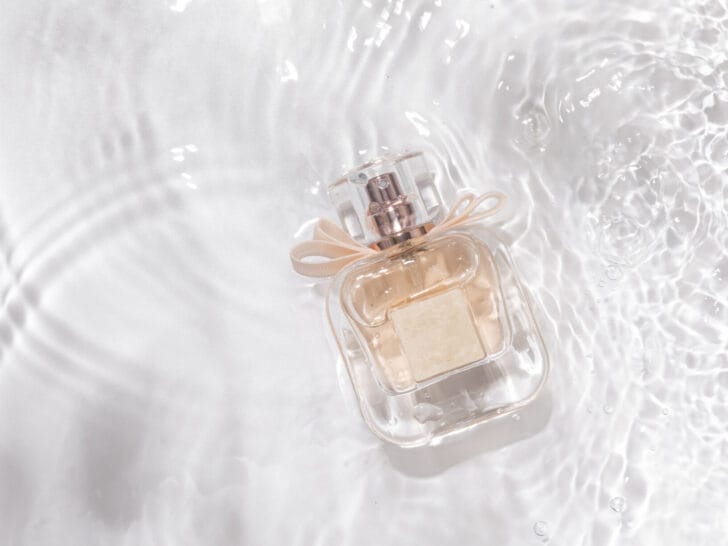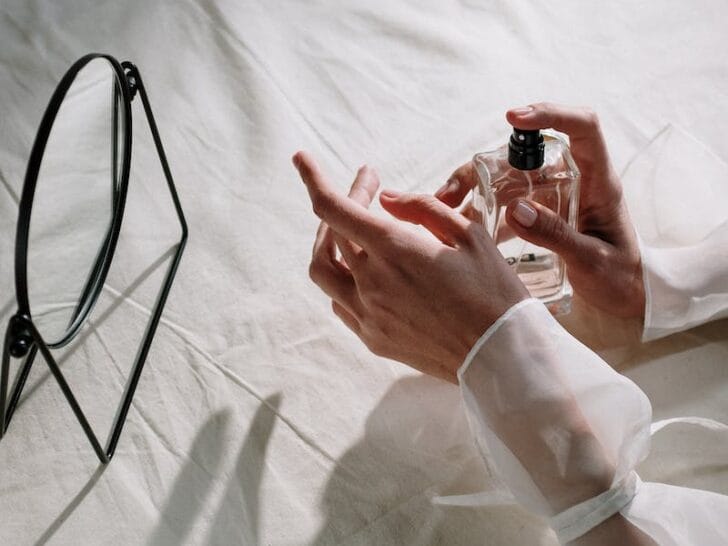But layering isn’t about randomly combining perfumes; it demands understanding, finesse, and a dab of playfulness. Through this playbook, we’ll unravel the nuances of perfume layering, ensuring your olfactory escapades yield exquisite results.

Understanding the Basics of Perfume Layering
Perfume layering (with amazing scents such as the Love By Kilian Don’t Be Shy dupe) at its heart, is the practice of wearing two or more fragrances simultaneously to birth a unique aroma. This allows for a high degree of customization, enabling one to adjust their fragrance to reflect moods, occasions, or sheer whimsy. It’s also a brilliant strategy to breathe life into those bottles that have been somewhat neglected.
The Art of Balance
Achieving harmony in perfume layering is much like crafting a melodious song. It’s pivotal that neither scent overshadows the other. Instead, they should dance together, producing a well-rounded olfactory experience.
Intensity plays a crucial role. Some perfumes have a robust sillage, which is the trail of scent they leave in their wake. When engaging in layering, recognizing the strength of each fragrance is imperative. A light, airy scent can easily be engulfed by a potent oriental aroma.
Moreover, longevity should not be overlooked. If one perfume fades rapidly while its counterpart persists, the harmonious blend achieved at dawn may not survive the day.
Starting with a Solid Base
Every layered fragrance requires a sturdy foundation. This doesn’t mean the base must be potent or overwhelming, but it should anchor the fragrance, lending it depth and character.
Woody and musky aromas often make for excellent base notes. Their warm and grounding nature provides a stable backdrop against which more fleeting top notes can shine. However, it’s wise to steer clear of bases that are too intricate. Those with an overwhelming array of notes can cloud the layered aroma, making it difficult to distinguish individual scents.
Choosing Complementary Notes
Layering incompatible fragrances is like playing discordant notes on a piano. The scents should enhance and uplift one another, rather than create dissonance.
For success, it’s helpful to become acquainted with fragrance families. Perfumes hail from various families, such as floral, oriental, woody, and fresh. Although there’s no strict prohibition against combining families, this knowledge can serve as a guiding light.
It’s also beneficial to seek out shared notes. When two fragrances have overlapping notes, they tend to blend harmoniously. For example, a dominant note of rose in one perfume combined with subtle hints of the same in another is likely to produce a delightful blend.
Sequence and Application
The sequence in which fragrances are layered, and their application method can significantly impact the resultant aroma. This process can be likened to painting. The initial layer sets the tone, while subsequent ones add layers of depth and nuance.
It’s advisable to apply the denser fragrances first. These need time to settle and mingle with the skin’s natural oils. Following this with lighter scents ensures the final aroma is radiant and multi-dimensional.
Pulse points, such as the wrists, behind the ears, and the base of the throat, should be prioritized. These areas are warmer and thus better at diffusing the fragrance, ensuring the layered scents linger longer and evolve beautifully.
Experiment, but with Caution
The realm of perfume layering encourages creativity, but there’s a thin line separating a masterfully layered scent from an olfactory mess.
While it’s tempting to blend numerous fragrances, limiting oneself to two or three usually yields the best results. Exceeding this can result in a confusing amalgamation where individual notes are indistinguishable.
Before wholeheartedly committing to a combination on your skin, a test on a paper blotter can be revealing. This step allows one to preview the potential outcome without the interference of personal skin chemistry.
Embrace Individuality
The final, and perhaps most significant, aspect of perfume layering is the celebration of individuality. Every person’s skin chemistry, lifestyle, and even diet can influence how a fragrance unfolds. This uniqueness is to be cherished. While there are foundational guidelines to aid in layering, there aren’t absolute rights and wrongs. It’s about what resonates personally.
To wrap up, perfume layering is less about following rigid rules and more about embarking on a journey of aromatic self-expression. With foundational knowledge, a balanced approach, and a dash of experimentation, the layered fragrances one creates can be both personal and captivating. So, delve into this art and let your unique fragrance story unfold.

